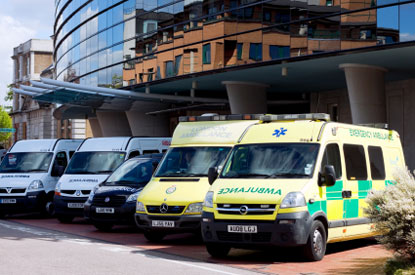By Richard Johnstone | 13 November 2013
The way the NHS in England provides urgent care is to be radically reformed over the next five years, after medical director Sir Bruce Keogh set out plans for the creation of two types of hospital accident and emergency department.

Keogh today published the conclusions of his review into the future of emergency care. This found that the current A&E system was under ‘intense, growing and unsustainable pressure’ as a result of rising demand from an ageing population and a ‘confusing and inconsistent array’ of services outside hospital.
As a result, he said, two types of hospital emergencydepartment should be created as part of a five-year reform plan.
One, which Keogh called emergency centres, would provide care for most cases, while between 40 and 70 major emergency centres would be created to deal with major killers, such as heart attacks and strokes.
However, such a reform would only take place as part of a system-wide transformation once the NHS has improved treatment outside hospital to reduce the pressure on hospital A&E departments.
Among the other recommendations, Keogh called for the much-criticised NHS 111 service to be enhanced as part of ‘highly responsive urgent care services’ so people no longer choose to queue in A&E. Improved access to GPs and other community services, such as local mental health teams and community nurses, was also required.
Better connecting all these services with the rebranded A&E departments would ensure the system was ‘more than the sum of its parts’, Keogh said.
‘Our vision is simple. Firstly, for those people with urgent but non-life threatening needs we must provide highly responsive, effective and personalised services outside of hospital. These services should deliver care in or as close to people’s homes as possible, minimising disruption and inconvenience for patients and their families.
‘Secondly, for those people with more serious or life threatening emergency needs, we should ensure they are treated in centres with the very best expertise and facilities in order to maximise their chances of survival and a good recovery.’
In order to implement the reforms, NHS England will now work closely with local commissioners over the next six months as they develop their five-year strategic and two-year operational plans. It will also identify and set up demonstrator sites to test new models of delivery for urgent and emergency care and seven-day services, as well as taking part in Monitor’s review of NHS payment mechanisms.
Responding to the proposals, the NHS Confederation said the health service and government needed to work with patients to make the changes in the review a reality.
Chief operating officer Matt Tee said Keogh’s report provided a ‘vision for sustainable emergency care of the future’.
He added: ‘The way we deliver care to patients must change, including changing the supporting mechanism such as single point of contact for patients and refining the payment system so that work is fairly paid for.’
Mark Porter, chair of the British Medical Association, said the report offered a ‘strong starting point’ for rethinking delivery of emergency care services. But he added that any changes must be clinically justified and evidence based, rather than centrally imposed.




















